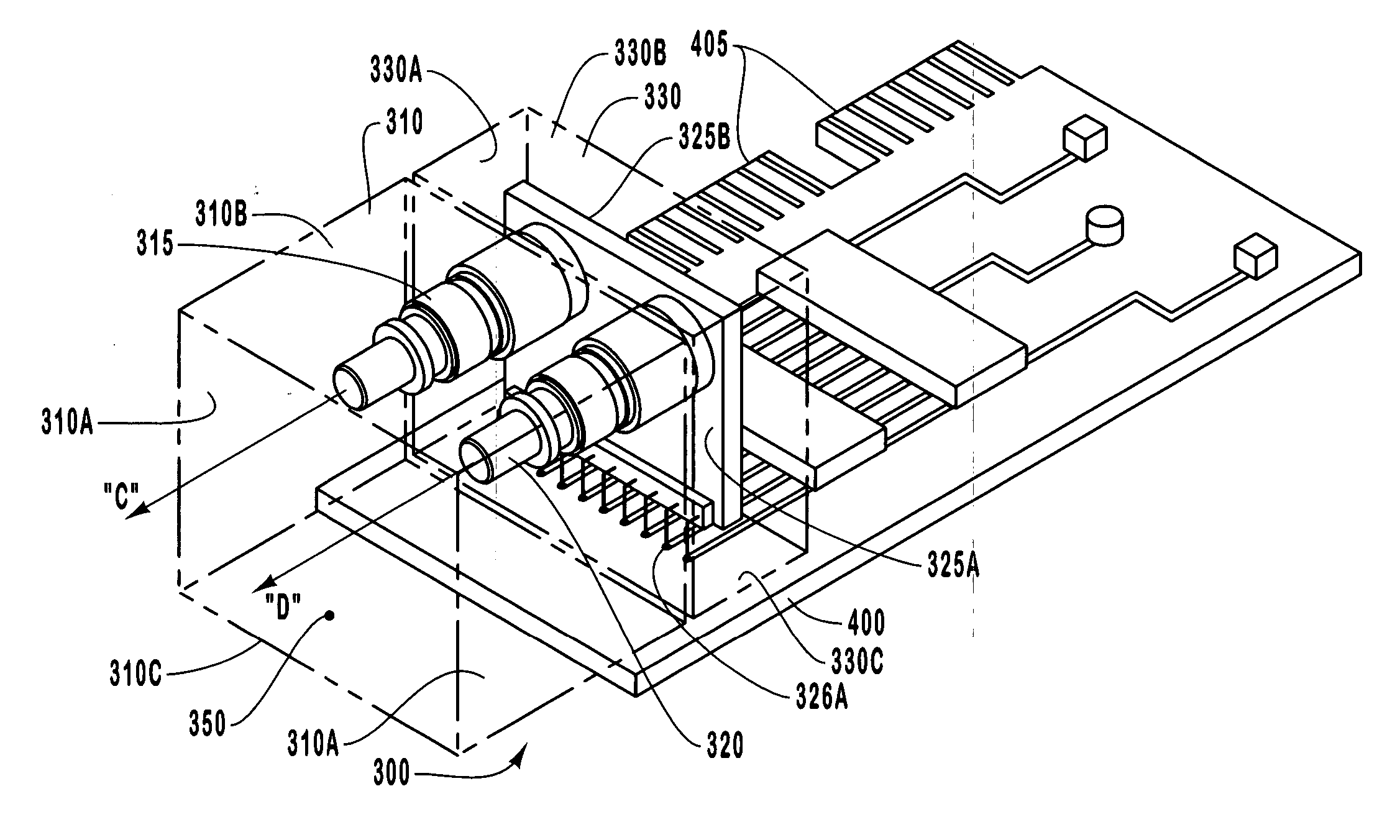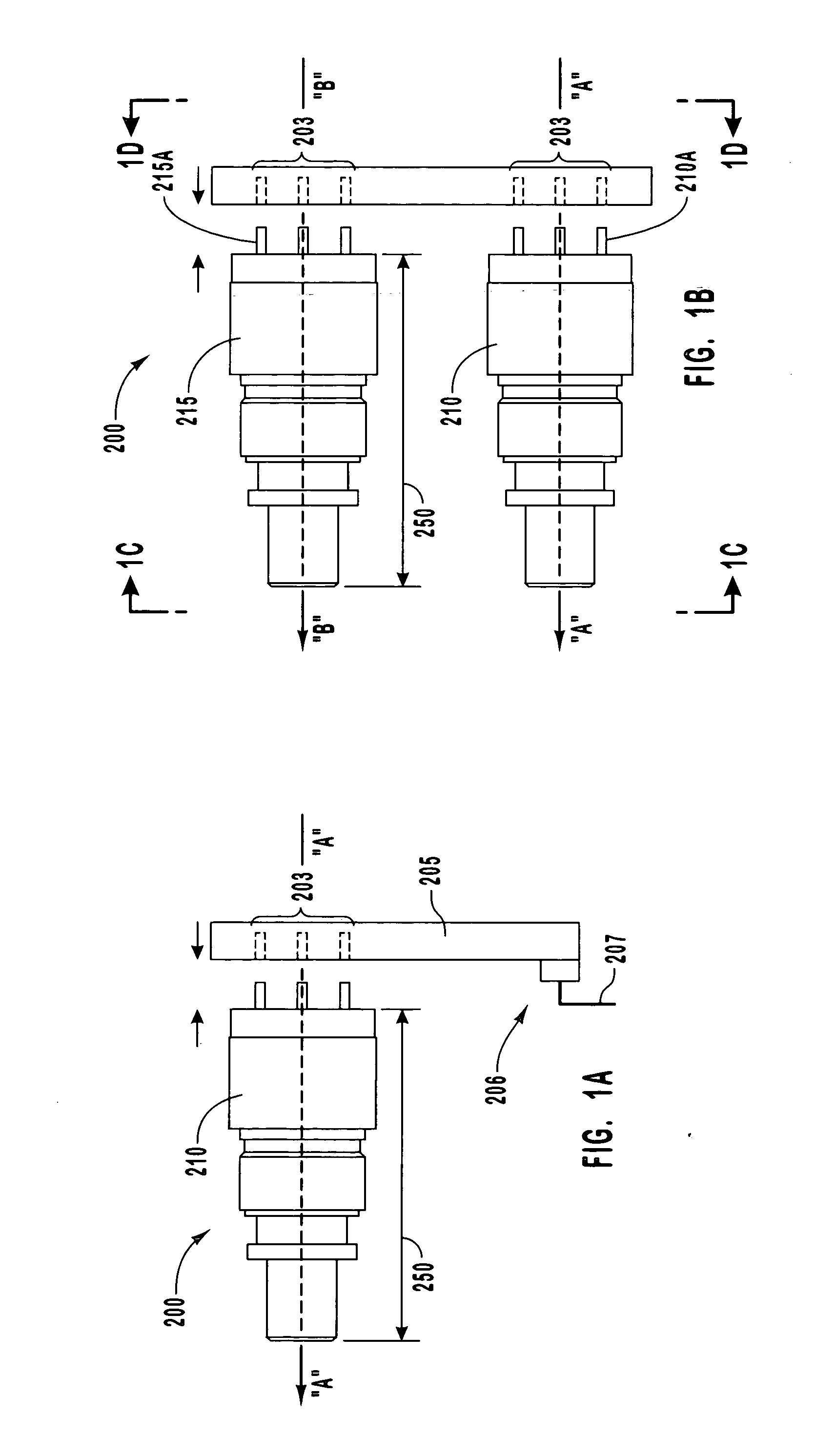Compact optical transceivers for host bus adapters
a technology of optical transceivers and host bus adapters, applied in the field of optical transceivers, can solve the problems of inability to integrate conventional optical transceivers into very small spaces, inability to meet the needs of such devices, and the body of conventional optical transceivers is still too wide and/or tall to fit within a typical pcmcia laptop envelope, etc., to achieve the effect of shortening the transceiver, reducing the space of the board, and reducing the size of the board
- Summary
- Abstract
- Description
- Claims
- Application Information
AI Technical Summary
Benefits of technology
Problems solved by technology
Method used
Image
Examples
Embodiment Construction
[0018] In general, exemplary embodiments of the present invention relate to compact optical transceivers that can be integrated within the relatively small physical envelopes defined by compact components, such as an HBA for use with a desktop computer, a laptop computer, or other similar computer system, while maintaining compliance with applicable operational and performance standards.
[0019] In one exemplary implementation, an optical transceiver is provided that comprises a transceiver housing wherein a ROSA and a TOSA reside. The ROSA and TOSA each define a longitudinal axis, and a transceiver substrate is mounted within the housing in a plane that is substantially perpendicular to the longitudinal axes respectively defined by the ROSA and TOSA. The transceiver substrate includes a plurality of electrical connections configured and arranged to operably interact with corresponding connections of an HBA or other compact device to which the transceiver is mounted.
[0020] As a resu...
PUM
 Login to View More
Login to View More Abstract
Description
Claims
Application Information
 Login to View More
Login to View More - R&D
- Intellectual Property
- Life Sciences
- Materials
- Tech Scout
- Unparalleled Data Quality
- Higher Quality Content
- 60% Fewer Hallucinations
Browse by: Latest US Patents, China's latest patents, Technical Efficacy Thesaurus, Application Domain, Technology Topic, Popular Technical Reports.
© 2025 PatSnap. All rights reserved.Legal|Privacy policy|Modern Slavery Act Transparency Statement|Sitemap|About US| Contact US: help@patsnap.com



